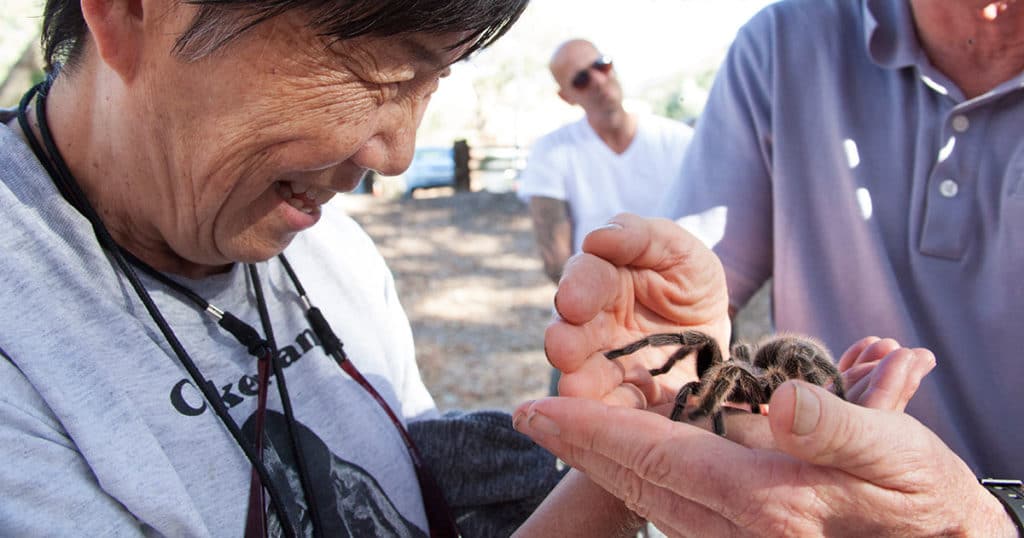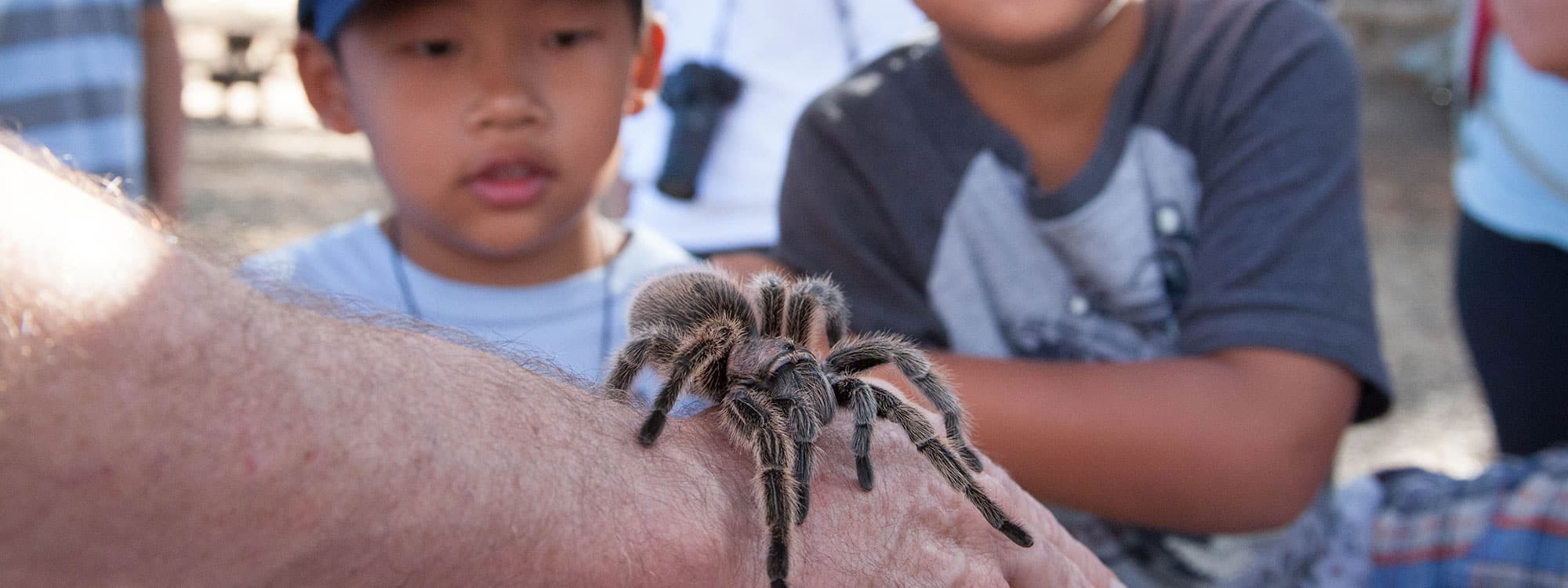Although tarantulas are common residents of our warmer East Bay and South Bay hills, we seldom encounter them, except in late summer and early fall.
That’s because they are nocturnal and live in underground burrows. Under the cover of darkness, the spiders emerge to grab beetles and crickets that venture too close to the burrow, prompting Mark Twain to muse, “I know I am not capable of suffering more than I did during those few minutes of suspense in the dark, surrounded by those creeping, bloody-minded tarantulas.” – Roughing It
Mr. Twain was known to exaggerate, and this was certainly one of those instances.
Our local tarantulas are quite docile, and not poisonous to people at all. They are lovers, not fighters. And therein lies a tale.

A tarantula grows by shedding its outer skeleton in a process called ecdysis. When a male turns 6 or 7 years old, he sheds for the last time. As he pulls himself out of the old exoskeleton, there are two little hooks (tibial spurs) on his front legs that weren’t there before. Until that last molt and the appearance of the hooks, it’s difficult to tell the boys from the girls. Unlike with a dog, you can’t tell just by looking underneath! The mature male soon leaves his burrow, never to return again. He’s got one thing left to do in life. Find a mate.
If he’s lucky and locates a female’s burrow, (not easy when your 8 eyes are pointed up at the sky), he taps at the top to entice her out. The female assumes the visitor outside is a cricket or beetle dinner, so she rushes out and rears up to strike. That’s when the male’s tibial spurs come in handy. He uses them to secure her fangs so they can safely “hook up” (the spider version of safe sex). After mating, he unhooks and scampers off before she remembers why she came out of the burrow in the first place. The female tarantula seldom kills males after mating. Dad goes off looking for another female, while mom heads back into her burrow to eventually lay eggs.
Here is a video taken a few years ago on one of our tarantula trek outings featuring a couple of amorous spiders. And don’t forget, “if you wish to live and thrive, let a spider run alive.”
Photos: Zoe Meyers©




